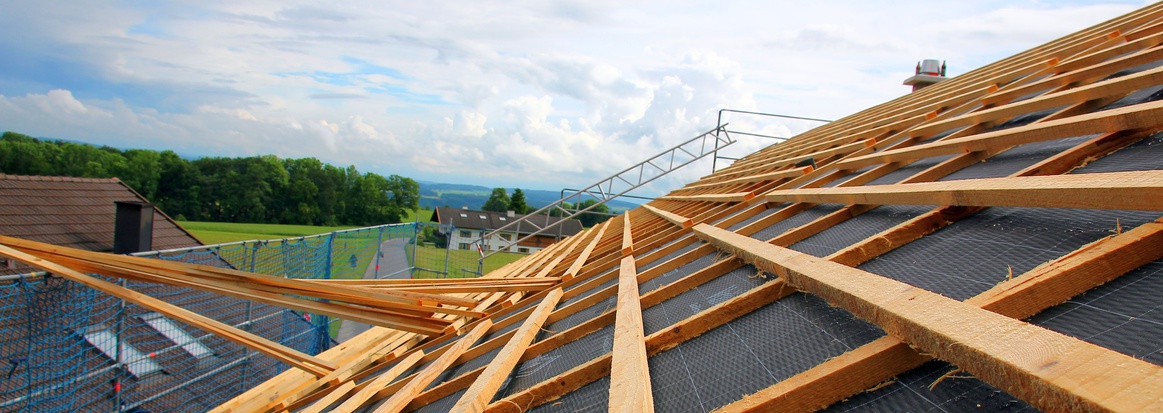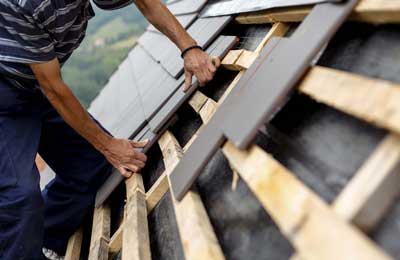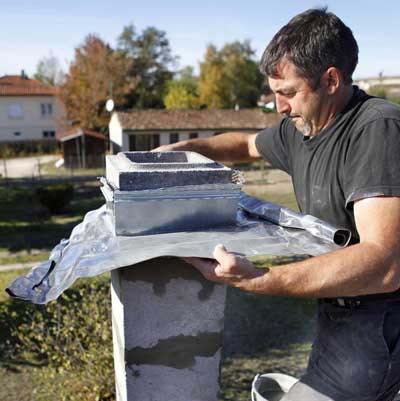

About the Author:
CEO at AlFiPa, responsible for operations as well as purchasing and sales. He is the primary contact for orders and deliveries within the company.
A large amount of the heat, up to 93%, is transmitted by radiation. A house without insulation loses this radiant heat. Insulation materials made solely from glass fibers or cellulose cannot stop radiation losses.
Unlike aluminum foils and aluminum composite films. Aluminum foil reflects up to 96% of the radiant heat. Aluminum is ideal as an extremely cost-effective and easy-to-shape, adaptable material for the insulation of walls and roofs.
Aluminum foil is the ideal partner for composite insulations and is durable thanks to a protective coating. This makes aluminum foil one of the most versatile materials in the insulation of houses.
Aluminum foil: ideal partner for composite insulation

PUR/PIR panels with aluminum foil for interior cladding in roof insulation
Aluminum foil is indispensable in the thermal insulation of roofs and walls. Today, thermal insulation panels are manufactured from solid polyurethane foam (PUR/PIR). Such panels are perfect for insulation if they are additionally laminated with an aluminum foil top layer.
Due to the aluminum, the PUR / PIR panels are thinner and lighter.
Thanks to the foil lamination, the boards are thinner and lighter, yet more efficient in insulation. PUR/PIR panels with aluminum foil are completely recyclable.
The film acts as a composite partner in heat insulation panels not only as a heat reflector, but also serves as a vapor barrier, which prevents the formation of mold in the intermediate layers. Aluminum foil with bitumen is often used as a vapor barrier, whereby the bitumen additionally protects the aluminum foil from damage.
Aluminum foil: heat reflection and steam barrier in one.
Porous PUR/PIR panels which are laminated with aluminum foil, cannot corrode upon contact with oxygen. The durability of such panels is extended by the aluminum foil by up to 50 years. The film also reduces the risk of fire.
In addition to PUR/PIR panels and bitumen, aluminum foil for thermal insulation is also combined with other materials – for example, as a single or double-sided top layer on air cushion foil. Here again, it lives up to its highly efficient heat-reflecting property.
Aluminum foil reflects up to 96% of radiant heat, making it an ideal insulation material.
A slim and easy-to-install insulation

The bitumen membrane can be seen underneath the roof batten, with the Aluminium side facing inwards. Finally, the roof tiles are installed.
The low weight and easy handling of aluminum-based roof insulation allows for speedy installation – an advantage especially in the insulation of large buildings such as warehouses.
Aluminum foil is light, easy to handle and has no negative health effects.
In many cases, not only are pure aluminum foils used, but aluminum composite foils are also used. In this case, a plastic foil is laminated on one or both sides of the aluminum foil. In most cases, a polyester film (PET film) is usually used, but other plastic films made of polypropylene (PP) or polyethylene (PE) are also available.
Aluminum composite foils have higher tensile strengths.
The plastic film provides a higher tensile strength. This also makes it easier to glue the aluminum foil to the insulation material. A glass fleece can also be used in order to further increase the tensile strength.
Aluminum foil is safe as an insulating material because it does not release any hazardous fibers.
In the case of wall insulation, the usable surface area of buildings is increased, because the insulating layer made of aluminum foil in the insulation lining prevents the need for an interior masonry.

Chimney cladding with Aluminium strips
Aluminum foil protects against heat
Even in the hot season aluminum foil in the roof insulation assumes a supporting function. The low-cost, supple material also reflects 96% of the heat radiation from the outside
The active principle is therefore the same – except for the fact that in the summer the effect is directed outwards, the baking heat is fended off and the house interior is kept at a cool and pleasant temperature.
Perforated aluminum foil allows air circulation.
Two types of aluminum foils can be distinguished for insulation against solar radiation. The first type is perforated. The tiny holes in the surface of the aluminum allow the circulation of air. This is important because condensation water is formed by the large temperature differences that prevail on the inside and outside of the insulation. The small air holes in the aluminum foil thus prevent mold formation.
The situation is different, for example, in the case of basement walls. A vapor barrier or moisture barrier is required. When basement walls are installed with thermal insulation, an unperforated aluminum foil should be used as the base of the insulation material.
Overview of aluminum foil types and their applications
| Aluminum foil type | Properties | Main areas of application | Advantages |
|---|---|---|---|
| Standard aluminum foil | Non-perforated, reflective | General roof and wall insulation | High heat reflection, cost-effective |
| Perforated aluminum foil | Perforated, permeable to air | Roof insulation to prevent condensation | Prevents mold, allows air circulation |
| Air foil with bitumen lamination | Bitumen layer, protective | Basement walls and areas susceptible to moisture | Additional protection against moisture and damage |
| Aluminum composite film | Laminated with plastic, tear-resistant | Industrial applications, large insulation projects | Increased tear resistance, easy handling |
| Alu-polyester foil | PET-coated, durable | Packaging industry, protective insulation | Protection against environmental influences, durable |
Are you looking for aluminum or composite foils for insulation?
The construction industry is the second largest user of aluminum after the transport sector – through the use of aluminum foil in the insulation of roofs and buildings. Aluminum foil is a versatile, cost-effective and easy-to-use material which serves as a heat deflector and vapor barrier at the same time.
Are you looking for aluminum or composite foils for insulation, or to produce insulating materials?
Feel free to ask us!
